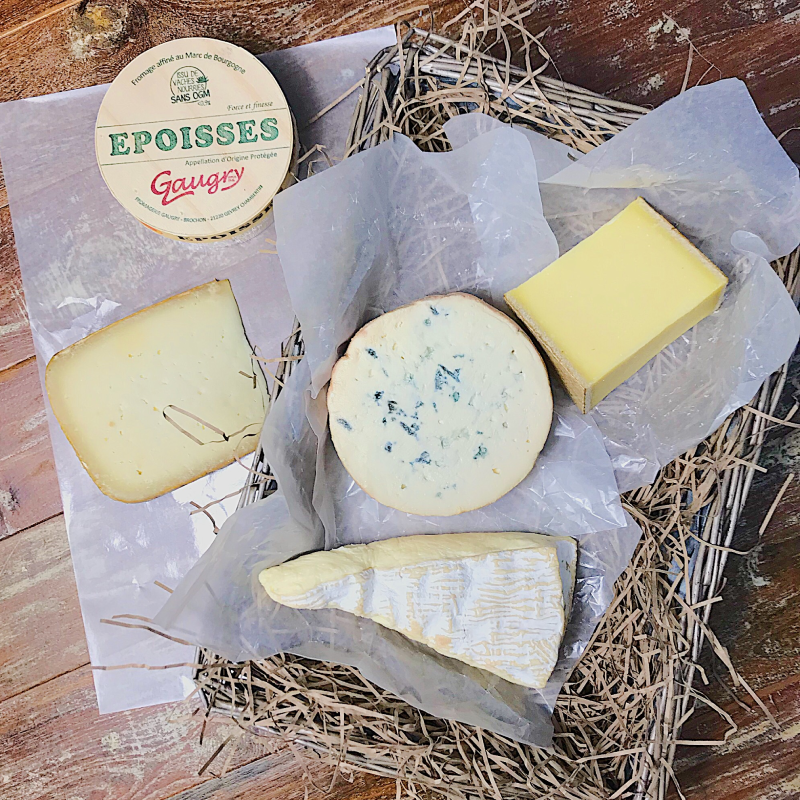Exploring the delights of French Cheese


Cheese, the beloved culinary treasure, holds a special place in French culture, contributing to the nation’s rich gastronomic history. This blog post will delve into the origins and evolution of French cheese-making, explore region-specific varieties, highlight popular types of French cheese, and offer guidance on pairing these delectable creations with wine. Additionally, we’ll discuss the best practices for storing and serving French cheese to ensure a delightful tasting experience.
The art of cheese-making in France dates back centuries, with its roots entwined in the agricultural traditions of various regions. From humble beginnings, the craft has evolved into a sophisticated and revered practice, reflecting the diverse landscapes and climates of the country.
France boasts a dazzling array of cheeses, each tied to its region of origin. From the buttery delights of Normandy to the robust flavors of the Alps, the diversity of French cheeses is a testament to the country’s geographical and cultural richness. Exploring these region-specific varieties allows one to embark on a culinary journey through the heart of France.
Lets take a look at some of the most popular French Cheese
It’s important to note that the vast world of French cheese also includes seasonal treasures and limited-edition creations. Some cheeses listed, may be available only during certain times of the year due to the nature of their production. Additionally, the dynamic landscape of artisanal cheese-making introduces limited-production gems that may not be permanently stocked. These fleeting delights further contribute to the allure and excitement of exploring the diverse and ever-evolving world of French cheese, encouraging enthusiasts to savour these delights whenever the opportunity arises.
- Brie: Often hailed as the “Queen of Cheeses,” Brie is a creamy, soft cheese with a bloomy rind that encapsulates the essence of French indulgence.
- Camembert: A cousin to Brie, Camembert is a soft, creamy cheese known for its distinctive edible rind, and often baked for extra gooey goodness.
- Roquefort: This tangy blue cheese, made from sheep milk, is a culinary gem from the caves of Roquefort-sur-Soulzon, providing a bold and distinctive taste.
- Langres: Failing from the Champagne region, Langres is a bold and creamy delight known for its pungent aroma and complex, tangy flavour profile.
- Reblochon: With its soft washed-rind and smear-ripened texture, Reblochon delivers a nuanced flavour profile, capturing the essence of the Savoie region.
- Comté: Renowned for its nutty flavour, Comté is a hard cheese that undergoes ageing for varying durations, each imparting distinct characteristics to the final product.
- Ossau Iraty: A semi-hard cheese made with sheep’s milk and has a robust earthy aroma. According to the Basque, the recipe has remained unchanged for 4000 years.
- Pont-l’Évêque: With a soft and rich texture, this cheese, distinguished by its orange rind, encapsulates the flavors of Normandy.
- Chèvre (Goat Cheese): Including varieties like Valençay and Selle sur Cher, goat cheese brings a distinct, earthy tang to the French cheese landscape.
- Délice de Bourgogne: A soft-ripened triple-cream cheese. The creamy texture results from the extra cream that is added during the cheese-making process.
Pairing French Cheese with Wine
The marriage of French cheese and wine is a time-honoured tradition. Recommendations for pairing include the creamy Brie with a crisp Chardonnay, the robust Roquefort with a sweet Sauternes, and the nutty Comté with a bold Bordeaux. Understanding these pairings enhances the overall sensory experience, creating a symphony of flavours on the palate.
Storing and Serving French Cheese
To fully appreciate the flavours of French cheese, proper storage and serving are crucial. Keep cheese refrigerated and wrapped in parchment paper or cheese paper to maintain freshness. Allow cheese to come to room temperature before serving to enhance its flavours, and (where possible) use separate knives for each cheese to avoid flavour cross-contamination.

French cheese stands as a culinary masterpiece, intricately woven into the fabric of French culture and global gastronomy. From the iconic Brie to the pungent Roquefort, each cheese tells a story of its region, history, and craftsmanship. As we savour these delights, we celebrate the enduring legacy of French cheese, a testament to the country’s commitment to preserving and perfecting the art of cheese-making. Like the sound of any of the cheeses mentioned in this blog post? They can all be found by clicking the link below…

